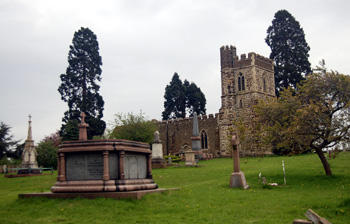
Old Linslade church from the north May 2008
Although now made up of little more than the church of Saint Mary's, Old Linslade Manor and a few farms and dwellings Old Linslade was the original main seat of settlement in the parish, although the hamlet of Southcott lying two miles or so south, as an important secondary centre. Until the 19th century the modern urban settlement of Linslade was fields with the odd cottage or farmhouse.
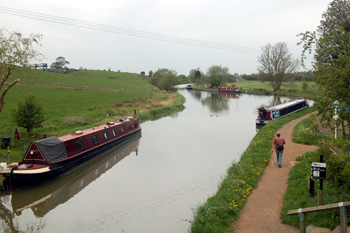
Site of the Holy Well on the west bank seen from the Old Linslade canal bridge May 2008
Old Linslade was important enough to have been granted a market and fair in 1251. In 1299 the Bishop of Lincoln was suppressing the so-called holy well and this may be a clue as to the beginning of Old Linslade's decline; perhaps the Vicar was concerned about falling numbers, hence falling income, in the parish and so either invented or else publicised the well to gain an income from pilgrims.
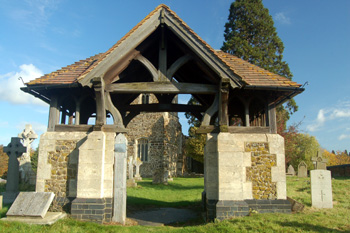
Old Saint Mary's lich gate October 2008
By the middle of the next century Old Linslade was clearly depopulating. In a return made in 1342 known as the Nonarum Inquisitiones two hundred acres in Linslade was said to be lying uncultivated due to the poor quality of the soil. The soil in this part of the county is sandy heathland and does not readily sustain good arable crops. It is likely that the population before the beginning of the 14th century had been rising leading to more intensive cultivation which exhausted the already poor soil.
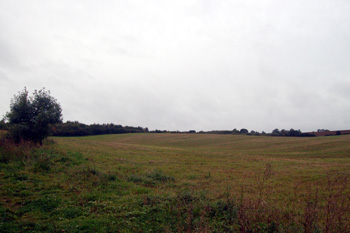
Linslade Wood seen from Stoke Road October 2008
The Black Death, estimated to have killed between a quarter and a half of the population of Europe, arrived in England, at Weymouth, in June 1348. It is known that two vicars of Leighton Buzzard died in 1349, suggesting that the plague had reached the area in that year. It seems reasonable to hypothesize that the plague added further depopulation to the already dwindling numbers in the settlement. Certainly, in 1377 an inquisition after the death of Sir John Dageney described that property he held from the Lord of the Manor of Linslade as: "a messuage in ruins, 120 acres of sandy arable sown only in alternate years and eight acres of meadow whereof seven acres in the marsh are worth four pence a year and one acre is worth seven pence a year".
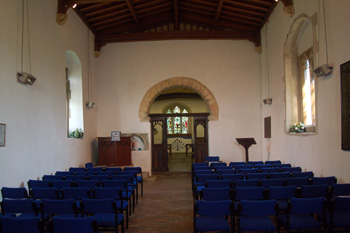
Saint Mary's interior looking east May 2008
It seems likely that the people of Old Linslade either went south to Southcott, making that the main centre of population in the parish for the next six hundred years or to the nearby market town of Leighton Buzzard. Oddly, in the 15th century the church of Saint Mary's was greatly rebuilt, although there is no evidence of increased population.